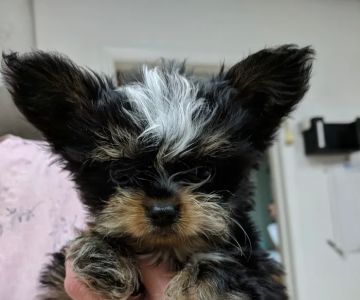Did Ancient Egyptians Have a Veterinarian?
When we think about Ancient Egypt, we often imagine grand pyramids, majestic pharaohs, and elaborate tombs. But what about the animals of ancient Egypt? While much of the historical focus has been on human life, the ancient Egyptians were also very attuned to the needs of their animals. From the majestic cats that roamed the temples to the horses that pulled chariots, animals played a vital role in Egyptian society. So, did they have a veterinarian, someone dedicated to their health and well-being? Let’s take a deep dive into this intriguing question.
1. The Importance of Animals in Ancient Egypt
Animals were incredibly important in ancient Egyptian society. Cats, for example, were revered and considered sacred, associated with the goddess Bastet, the goddess of home, fertility, and protection. Horses were essential for transportation and warfare, and cattle were crucial for farming. But beyond the symbolic and functional roles, animals were also valued for their companionship and as a source of food. This deep connection with animals suggests that the Egyptians likely took their care seriously. But did they have a designated person to tend to their health?
2. Evidence of Animal Care in Ancient Egypt
Although the Egyptians didn’t have veterinarians in the modern sense, there is significant evidence that they had people who specialized in animal care. Ancient Egyptian texts and murals depict people performing medical procedures on animals, especially on horses, dogs, and cattle. They also show Egyptians caring for sick or injured animals, which indicates that they recognized the need for specialized animal care.
- Horse care: Horses were especially important to the Egyptians, particularly for military and ceremonial purposes. Ancient texts mention the care of horses, including grooming and treatment for injuries, suggesting the presence of a horse-specific caretaker.
- Priests of animals: Many temples, particularly those dedicated to gods associated with animals, had priests who were responsible for the care of sacred animals. These priests often had specialized knowledge about animal welfare.
- Medical instruments: Archaeologists have uncovered tools that could have been used for treating animal wounds, including what seems to be early forms of surgical instruments.
3. The Role of Priests and Caretakers
In Ancient Egypt, many animals were kept in temples or sacred places, where they were considered divine or symbolic. Priests, who were responsible for overseeing these animals, often had a significant role in their care. They would ensure the animals were kept in good health, performed rituals for them, and were knowledgeable about how to treat injuries or illnesses. While they might not have been "veterinarians" by modern definitions, their role in animal care was certainly significant.
4. Medical Knowledge and Animal Healing
The Egyptians were highly skilled in medicine, and their knowledge extended to animals. They understood the importance of hygiene, proper nutrition, and injury prevention for animals. In fact, many ancient Egyptian medical texts that have survived describe treatments for various animal ailments, from healing wounds to understanding diseases that affected livestock. These early treatments could involve the use of herbs, ointments, and even early forms of surgery.
One of the most well-known texts is the Papyrus Ebers, which, while mostly focused on human medicine, also contains information on animal care. The Egyptians likely used the same remedies for both humans and animals, adapting them for different needs.
5. Animal Mummification and the Spiritual Connection
Animal mummification provides further insight into how the Egyptians viewed animals. They not only preserved the bodies of humans but also of animals. Many animals, such as cats, birds, and even crocodiles, were mummified as offerings to gods. This practice underscores the spiritual and symbolic importance of animals in Egyptian society.
Mummification required a detailed understanding of anatomy and preservation, which suggests a sophisticated approach to animal care and health. It’s likely that individuals skilled in embalming and mummification were also skilled in maintaining the health of these animals during their lifetimes, further highlighting the importance of animal care in Ancient Egypt.
6. Modern Veterinary Practices and the Legacy of Ancient Egypt
While the concept of veterinary medicine as we know it today didn't exist in Ancient Egypt, their treatment of animals laid the groundwork for future practices. The combination of knowledge about animal anatomy, the use of medicinal herbs, and the ceremonial care of sacred animals all contributed to the development of veterinary science over time. In fact, many modern veterinarians can trace their profession’s roots back to early practices like those observed in Egypt.
Today, veterinary care has evolved significantly, with highly trained professionals providing specialized treatment for all types of animals. However, it’s fascinating to think that the seeds of this profession were planted thousands of years ago in ancient Egypt, where care for animals was an essential part of daily life.
SEO Title: The Role of Veterinarians in Ancient Egypt: A Historical Perspective SEO Keywords: Ancient Egypt, veterinary care, Egyptian animals, animal care, history of veterinary medicine SEO Description: Discover how the ancient Egyptians cared for their animals and whether they had veterinarians. Learn about their practices and the legacy of animal health in Ancient Egypt.










